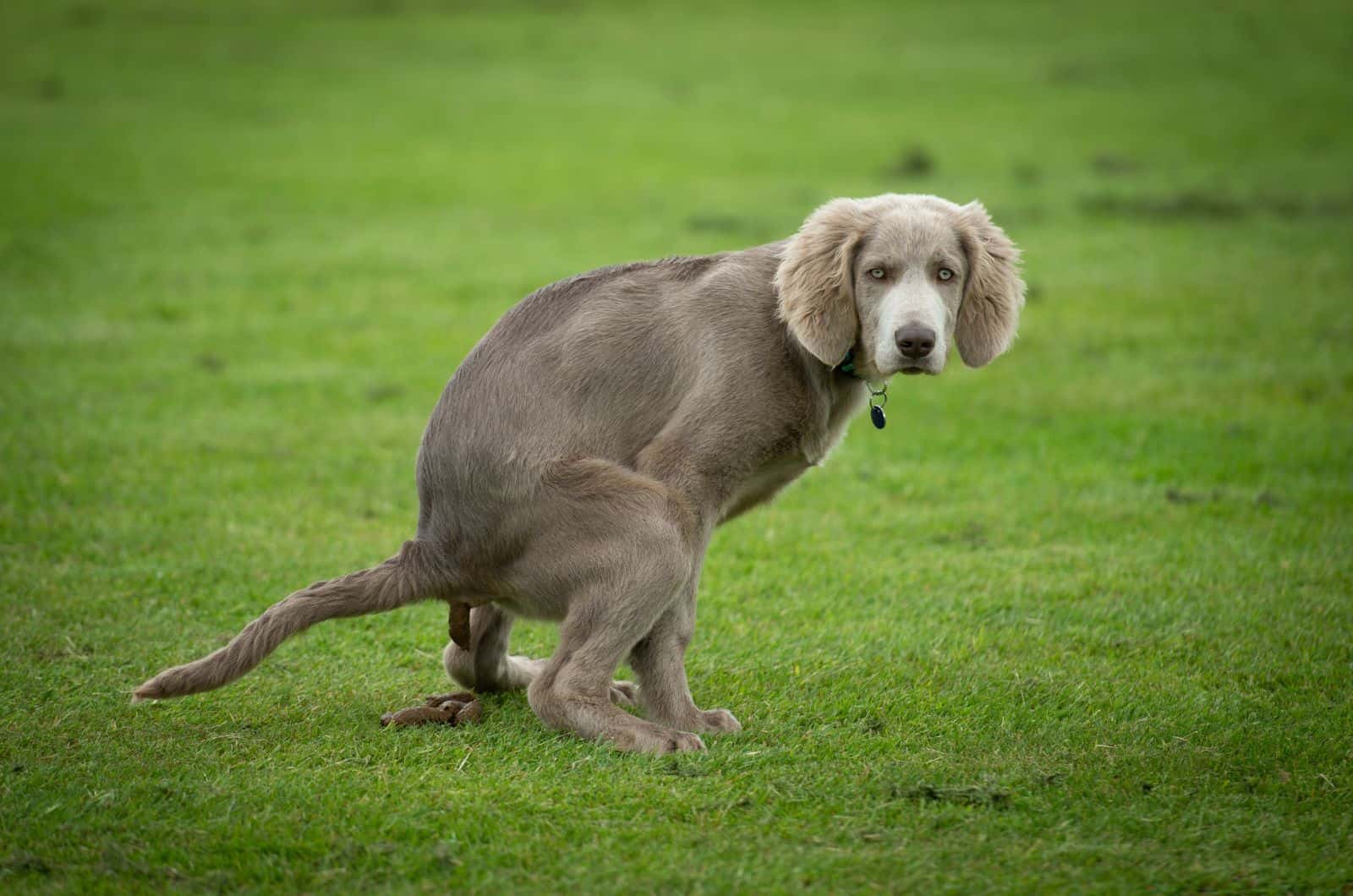As a dog owner, you might have experienced a situation where your dog seemed to be too busy to have a bowel movement or simply couldn’t defecate because it was constipated.
This kind of situation can be frustrating if you’re in a hurry or if the weather outside is bad and your dog just seems to be taking its time to sniff the roses—but it’s even more frustrating if your dog is actually constipated and you’re worried that there might be an underlying medical issue at hand.
There are several different factors that come into play when it comes to a dog’s bowel movements.
Your pooch might just be curious about its environment and is procrastinating doing its business, it might be picky about where exactly it wants to poop, it might be stressed or anxious, or there could be an underlying health problem that is the cause for your pup’s constipation, which could lead to severe obstipation.
So, if you’re wondering what you can do to boost your pooch’s “poop-ability”, read on to find out how to make your dog poop instantly.
How To Make A Dog Poop Instantly
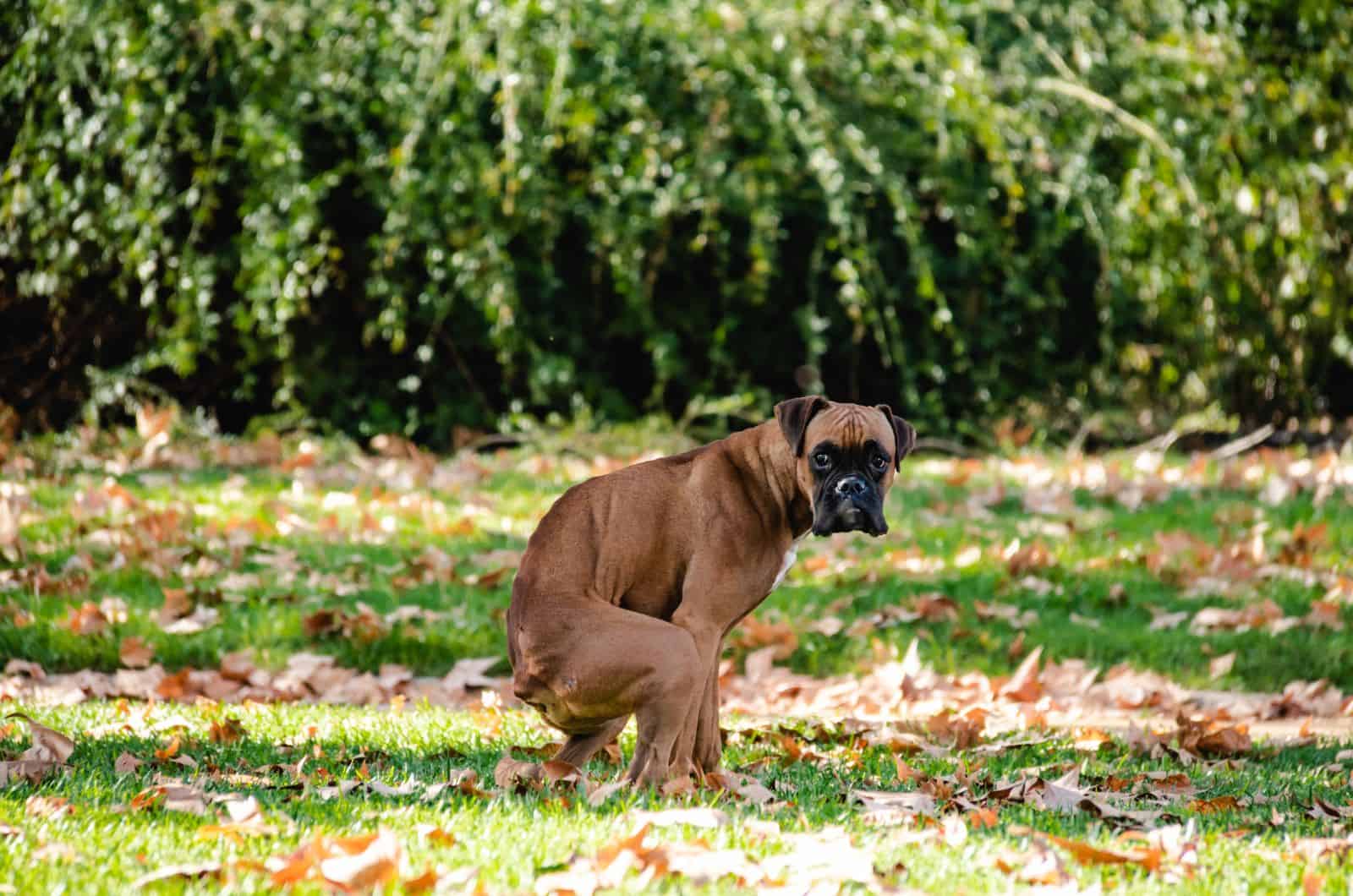
Although your local veterinarian will gladly step in if you need a hand to make your dog poop more efficiently, there are some completely safe and easy home remedies that you can try first in order to relieve your dog of blockages.
There are several different foods that you can feed your best friend to promote regular bowel movements, as well as different medications, supplements, and lifestyle changes that you can implement to have the desired effect.
You should try some or all of these methods before you decide to have a vet intervene—but if all else fails, your dog’s vet will likely be glad to help out.
1. It’s All In The Food
Contrary to what you might first think, your dog is most likely not intentionally refusing to obey your commands when you try to make it poop, which might lead you to think that you need to assert more dominance.
The more likely cause for your pup not pooping is because it’s constipated and it simply needs a helping hand—if constipation is not addressed, it can quickly turn into obstipation.
The first (and easiest) thing that you can try to alleviate your dog’s constipation is to change its diet—switching from dry kibble to canned dog food can help your dog poop more easily and will make your dog’s stool softer.
Hydration is key—just like humans need to consume foods that are rich in moisture (such as soup, broth, fruits, and vegetables that contain moisture), in addition to drinking adequate amounts of water to have healthy and regular bowel movements, so do dogs.
The extra moisture in canned dog food will help your dog poop more easily—it won’t work overnight or do wonders, but it will certainly help to promote healthy bowel movements and over time, will result in the elimination of constipation.
Apart from giving your dog fresh drinking water, you can also give it some chicken broth or food with more moisture in it in order to keep your dog’s digestive system working properly.
2. Probiotics And Fiber-rich Foods
In addition to the moisture that’s naturally present in many foods, both humans and dogs need to have a balanced diet that’s rich in fiber in order to keep their digestive systems working properly.
Another thing that helps to promote healthy bowel movements and digestion is probiotics—which are live yeast and bacteria that are present in a lot of different foods and help to restore healthy gut bacteria, which is beneficial to the digestive system.
You should look for ways to add more fiber and probiotics to your dog’s diet—whether you buy some over-the-counter probiotic formulations, make them yourself at home, or just give your dog some plain-old milk or yogurt.
Foods that are rich in fiber and that are safe for dogs to consume are spinach, carrots, apples, papaya, broccoli, green beans, etc.—add a teaspoon of natural psyllium husk and you’ll definitely see a change in your dog’s pooping schedule.
Of course, you can also find ready-made chew snacks that will help to regulate your dog’s overall gut health.
3. Canned Pumpkin For Dogs
In addition to all of the above mentioned, another thing that quickly helps dogs poop is canned pumpkin for dogs—it’s high in both fiber and moisture and most dogs love the taste of it.
Just be careful not to feed your pup a pumpkin puree or pumpkin pie filling, as these artificially sweetened foods contain lots of sugar, which is counterproductive in this case.
The amount of canned pumpkin you should feed your dog depends on the individual dog’s body mass—the formula that you should use to figure out how much to feed it is one teaspoon of canned pumpkin per 10 lbs of body weight.
If, for some reason, you cannot procure canned pumpkin or your dog doesn’t want to eat it, simple alternatives to canned pumpkin are olive oil and coconut oil, both of which have natural laxative properties—although both oils also contain a high amount of calories, so you should factor that in in order to avoid weight gain in your dog.
Other Methods To Consider
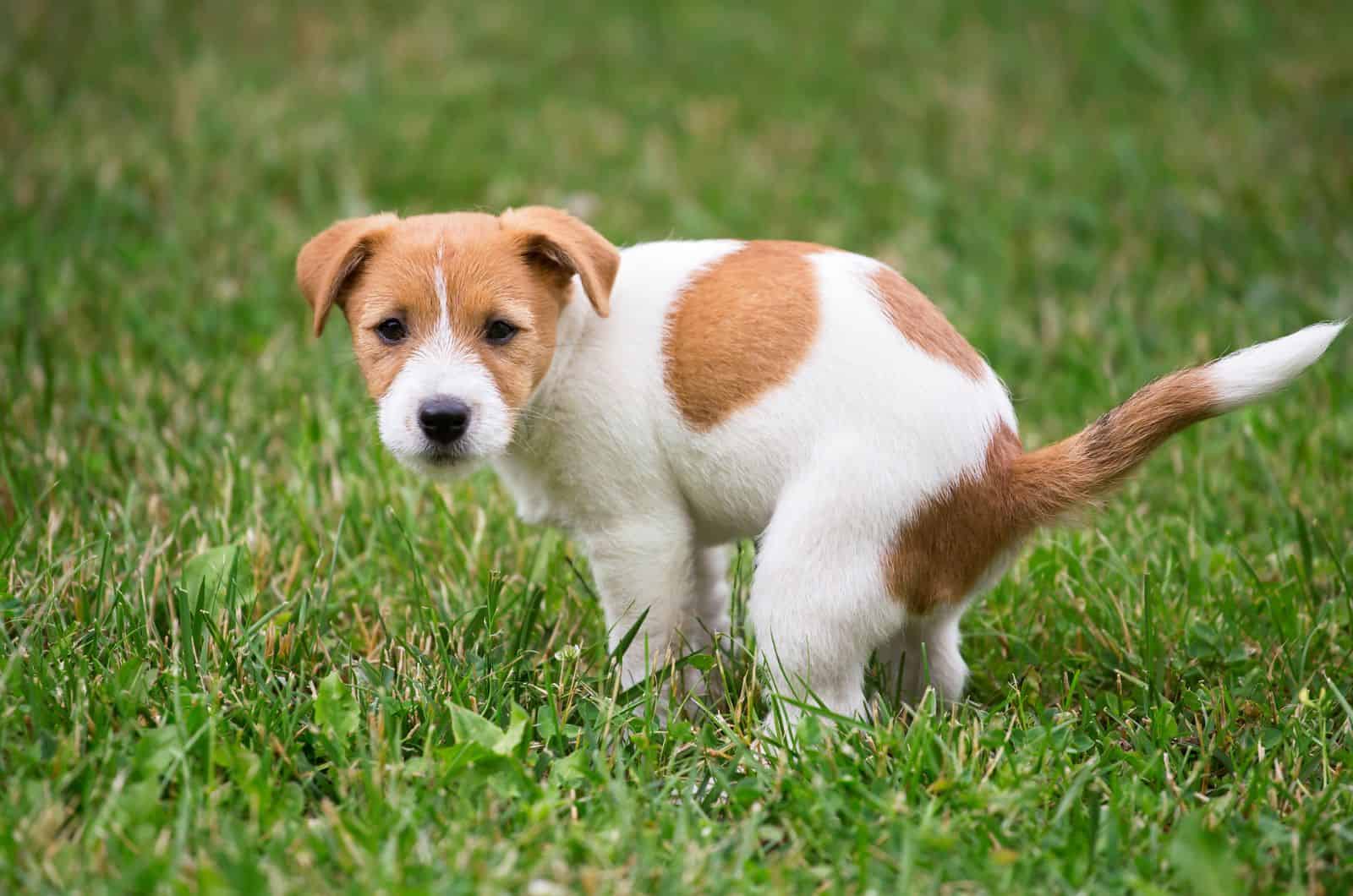
If you’ve already tried the above-mentioned methods and they’re not working for your dog, don’t lose hope.
There are other methods that you can turn to in order to help your dog relieve itself before turning to a professional for help.
1. Physical Stimulation
Before you try this method, it’s worth noting that your dog probably won’t be too thrilled about it.
Although dogs love to be petted over the majority of their bodies, they’re not too fond of any foreign objects or touches around their sensitive private parts—the anal sphincter and the accompanying anal glands in particular.
Physical stimulation in this case means exactly what you think it does, but it’s an effective way of helping your dog poop.
You should use a pair of clean disposable gloves and apply a small amount of lubricant to your index and middle finger.
Then, proceed to gently but firmly press the soft tissue around your dog’s anus using your fingertips—grasp the tissue firmly while keeping your index and thumb about an inch apart, then press gently inward in order to stimulate the opening of the rectum.
Your dog’s natural reflex will be to flinch or move away from you due to the sensitivity of the area—so you might want to have another person help you out in this endeavor.
Manual stimulation of your dog’s rectum will most likely help relieve it from constipation, you should also perform this method outside so that your dog can quickly poop and not make a mess of your floor—it’s also normal for your dog to pee during this method, so keep that in mind and prepare accordingly.
2. Use A Squirt Bottle
Similar to the manual stimulation method, the squirt method promotes bowel movements and quickly relieves a constipated dog.
This method requires a bottle with a squirt cap and is performed by spraying fresh water up your dog’s rectum—and while your pooch might not love the method at first, it will surely be glad that you’re helping it out.
Make sure to use cool water and not to use excessive pressure—hot water is to be avoided at all costs since it can hurt your dog.
Squirt the water up your dog’s rectum and repeat this until it begins to defecate—of course, make sure to do this outside in order to avoid making a mess.
3. The Ice Cube Technique
Using ice cubes is another easy way to physically stimulate your dog to have a bowel movement—all you need for this method is a pair of disposable gloves and a single ice cube.
Make sure to give your pup a few pats or a hug in order to make it comfortable in your lap, then proceed to put on the gloves and gently lift its tail—gently insert the ice cube into your dog’s rectum and hold it there for about half a minute.
Of course, your dog will likely flinch and try to pull away from you because of the uncomfortable feeling, so make sure that you have a firm grip on its chest in order to keep it there.
After about thirty seconds of holding the ice cube in place, your dog will push the ice cube out, along with some poop—so again, be prepared for this eventuality and take precautions.
4. The Wet Wipes Method
Another easy method for how to make a dog poop instantly is to use wet wipes to stimulate a bowel movement—simulating what a momma dog does naturally with her tongue in order to make her puppy poop.
Since newborn puppies cannot defecate on their own, a mother dog will use its tongue to stimulate bowel movements until the puppy can do it on its own—although it can get a little messy, as with the previous methods, using wet wipes can quickly lead to a bowel movement.
You can use baby wipes to gently wipe your dog’s rectum, while also gently pressing on its tummy and moving your hand in a circular motion to stimulate a bowel movement.
What You Shouldn’t Do To Try To Make Your Dog Poop
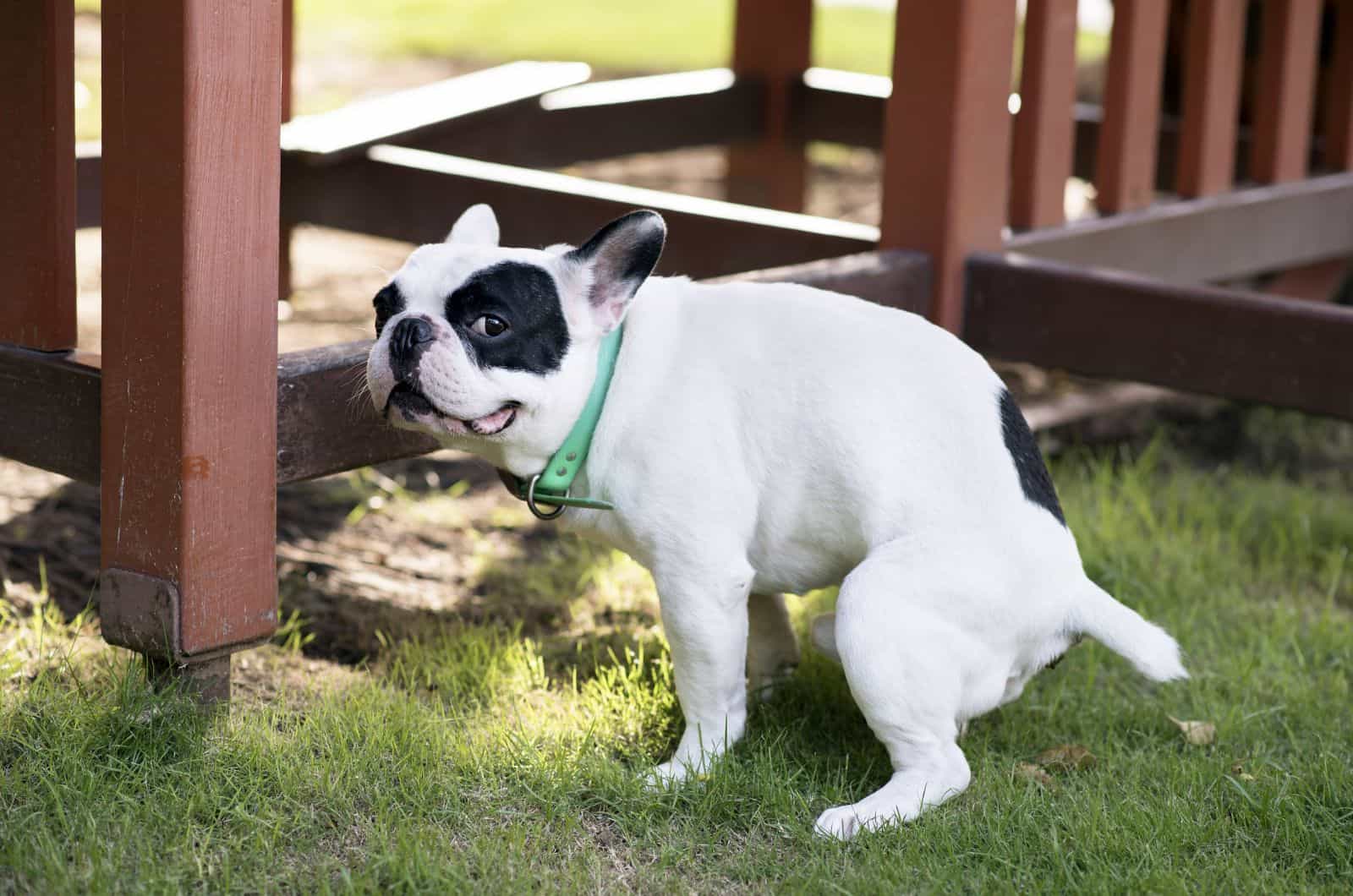
Just because a certain substance helps humans regulate their bowel movements, this doesn’t necessarily mean it will work for dogs—at least not safely.
As a responsible pet owner, you should always consult your veterinarian before introducing any new human food to your dog’s diet, especially if your pooch is constipated—you should also avoid giving your dog any medications without consulting a vet first, since this could lead to some severe side effects.
Things like laxatives and stool softeners might work for humans but can be detrimental to a dog’s intestinal health.
That said, whatever home remedy you decide to try out first, don’t feel disheartened if it doesn’t work right away.
After all, Rome wasn’t built in a day, and even the most effective methods can take some time to work properly—but your vet is always there if you need a hand.
However, there are certain things that you should avoid trying on your own without a professional to help you out.
Avoid Performing Enemas Or Using Suppositories
Dog enemas should always be performed under the supervision of a licensed professional veterinarian, as they are quite invasive and often uncomfortable for the dog—more so than the physical stimulation and the squirt methods that I’ve previously mentioned.
That said, enemas are effective and safe when performed correctly by a licensed DVM, and might just be the most effective option for more severe cases of dog constipation.
Even the American Kennel Club stresses that dog owners should never attempt to perform an enema on their furry friend, since injuries can occur if they’re performed incorrectly.
Sometimes the cause of a dog’s constipation could be an undiagnosed rectal tumor that’s actually blocking the pathway—trying to improvise an enema could lead to severe side effects in cases such as this.
Another thing that you should avoid doing is giving your dog suppositories, although they can be beneficial to the dog in most cases, it’s best if they’re given by a professional veterinarian in order to avoid injury.
Why Are Dogs So Selective About Where They Poop?
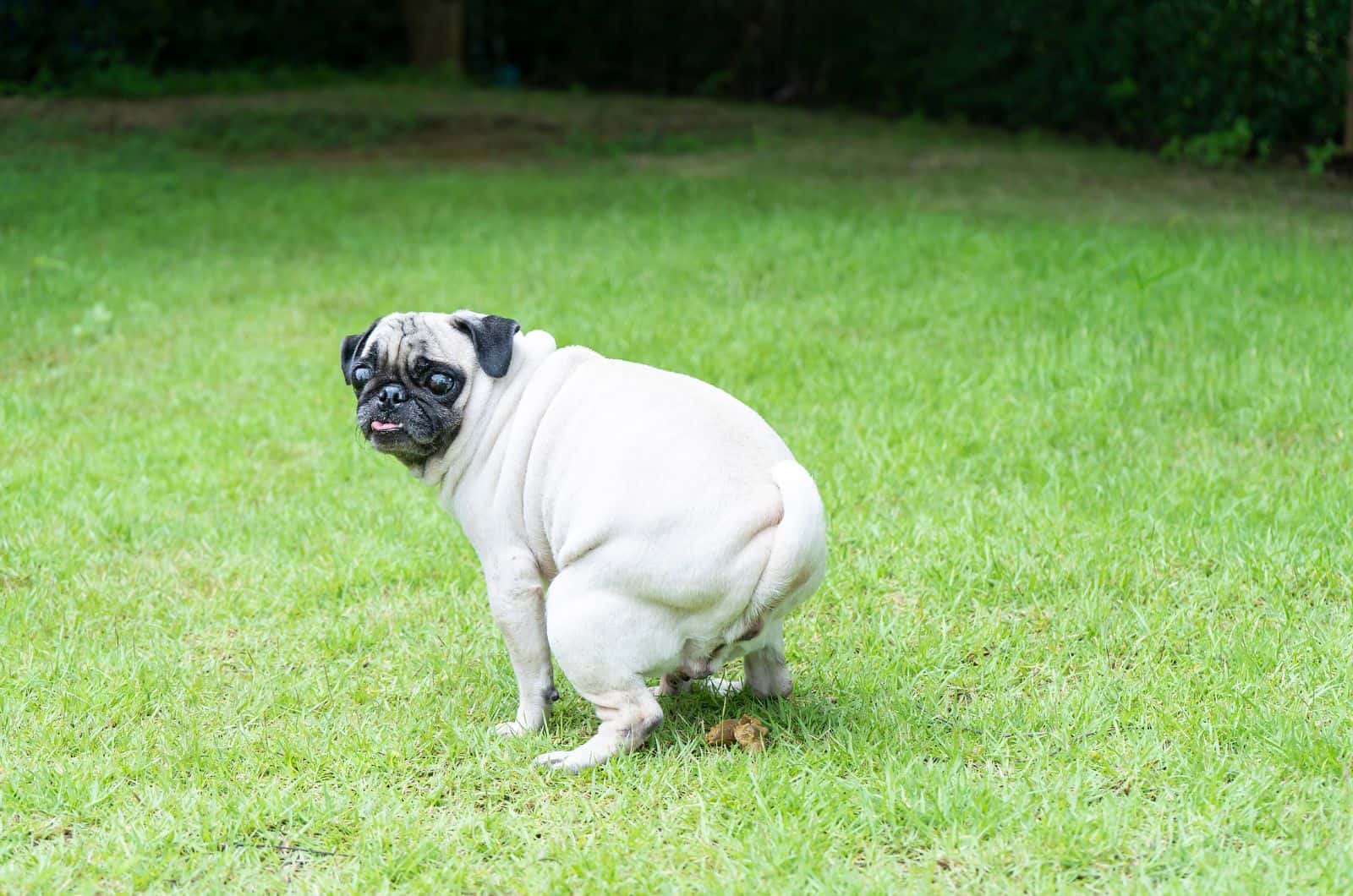
You probably already know that most dog breeds can be picky when it comes to choosing a place to poop or pee.
Sometimes it seems like your dog is looking for something, sniffing and scavenging the ground in order to find the perfect spot to do its business.
Sometimes you might observe the trademark signs that your dog is about to poop and just when it’s about to happen, your dog finds something else enticing and moves on—this can go on for hours without anything happening, which is understandably frustrating for most dog owners.
Most dogs hold their feces and urine until they find that “sweet spot” where they feel comfortable enough, and here’s why they do it.
1. Routine
Just like human children, our furry friends thrive on routine and order—if your dog is used to relieving itself in the morning, then you have no choice but to adjust to its needs accordingly.
Most dogs will get used to a specific routine and it can be challenging to force your pup to potty at a different time than it’s used to—this is also influenced by its feeding schedule and the amount of exercise that it gets.
Some dogs also need to walk around the block for a while until they feel it’s time to potty.
2. Surface
Dogs naturally feel the urge to poop on grassy surfaces—sometimes it’s hard for a dog to poop on other surfaces like concrete since it seems unnatural.
If you think about it, even puppy litter is made up of grit, sawdust, and other materials that are similar to soil in order to stimulate bowel movements.
If you live in an urban area where there’s a lot of concrete, this could be the reason why your dog often hesitates to poop during its daily walks.
3. Stress, Anxiety, Or Depression
Stress, anxiety, and doggy depression are real phenomena that can cause a myriad of both behavioral and physical changes in your dog—which includes routine behaviors such as drinking, eating, and pooping.
This is why it’s crucial to monitor your dog’s behavior in order to meet its needs accordingly.
If you don’t already know how to read your dog’s body language, you might want to learn more about the subject in our article—dog tail position chart.
That said, when your furry friend becomes familiar with its environment and has formed a routine, it will likely respond well to potty commands.
Can I Teach My Dog To Poop On Command?
Many pet parents around the world might be wondering if it’s possible to teach their dogs to poop on command.
The answer is yes, you can teach most dogs to poop on command with some practice—and a lot of treats.
Once you have a specific routine in place, you can start working on teaching your dog potty commands.
Most dogs often poop in the morning after breakfast, so this might be the perfect time of day to start teaching your best friend to poop on command.
How To Teach Your Dog To Poop On Command
Potty training is a basic step in general dog training—the best way to go about teaching your dog how to poop on command is to first let it poop on its own when it feels the need to; when it does, you should say the word you want to be the “poop command.”
Whatever the word you choose is, make sure that your dog can hear your command clearly and repeat it a couple of times every time it poops—you can use words or phrases like “go poop” or just “poop”.
Repeating the command and giving your dog a treat after it successfully poops will reinforce the behavior that you want, gradually leading to your dog realizing what you want it to do when you give the command.
Keep in mind that potty training your dog takes time, patience, and dog treats.
There’s no need to rush the process—once your furry friend learns the ropes and starts following the cues, it will easily follow your commands.
In Conclusion
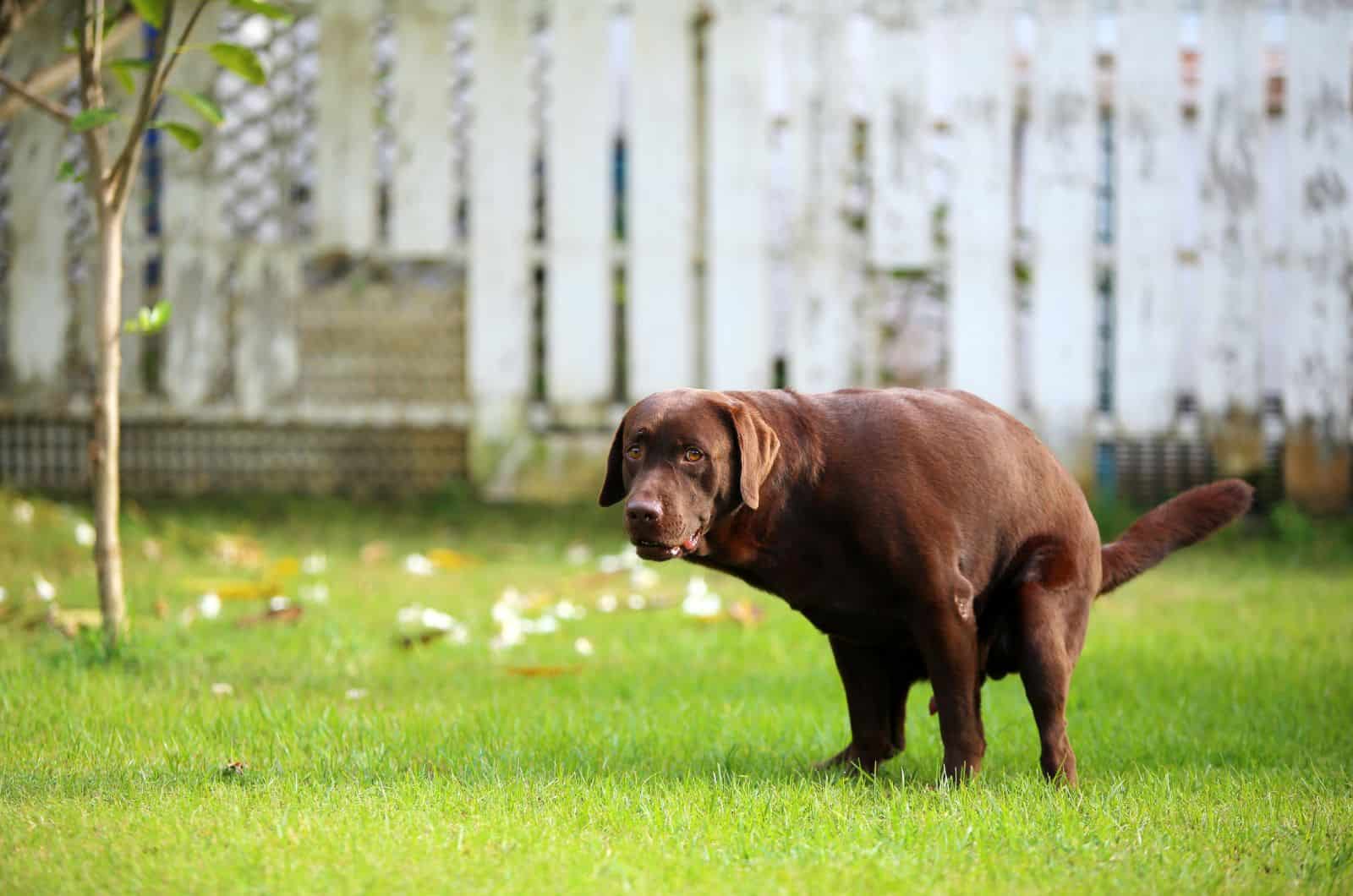
For most dogs, defecating is a time of vulnerability and should come naturally without you having to force it—unless of course, your dog is constipated, in which case you need to give it a helping hand.
Keep in mind that your dog needs to feel safe and protected in order to do its business, so try not to force it to poop simply because you’re in a rush.
But now that you know how to make a dog poop instantly, you’re bound to have an easier time with your dog’s pooping schedule overall.
Make sure to try these useful tips and tricks in order to help your dog poop, but don’t hesitate to consult a veterinarian if none of these methods work.
To recap, try these methods in order to help your dog poop:
• Add probiotics and fiber to your dog’s diet
• Feed your dog canned pumpkin and canned dog food
• Keep your dog well hydrated
• Add at least 1 teaspoon of coconut oil or olive oil to your dog’s food
• Take your dog for daily walks
Related articles:
• How To Socialize An Aggressive Dog: A Simple Guide For Dog Owners
• How To Make A Dog Throw Up: A Helping Hand
• How To Keep A Dog Entertained While At Work: 19 Tips And Tricks
